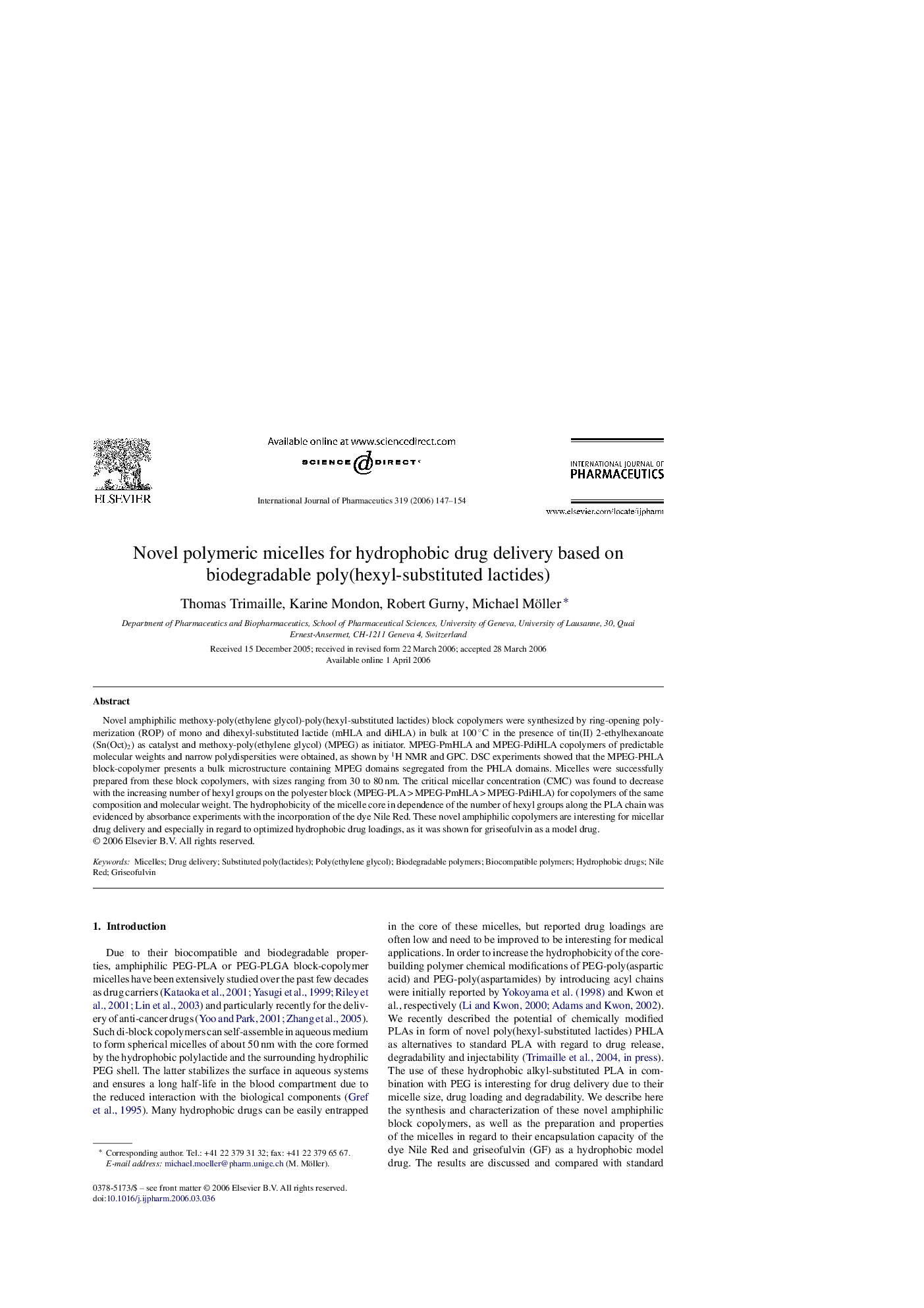| Article ID | Journal | Published Year | Pages | File Type |
|---|---|---|---|---|
| 2506808 | International Journal of Pharmaceutics | 2006 | 8 Pages |
Novel amphiphilic methoxy-poly(ethylene glycol)-poly(hexyl-substituted lactides) block copolymers were synthesized by ring-opening polymerization (ROP) of mono and dihexyl-substituted lactide (mHLA and diHLA) in bulk at 100 °C in the presence of tin(II) 2-ethylhexanoate (Sn(Oct)2) as catalyst and methoxy-poly(ethylene glycol) (MPEG) as initiator. MPEG-PmHLA and MPEG-PdiHLA copolymers of predictable molecular weights and narrow polydispersities were obtained, as shown by 1H NMR and GPC. DSC experiments showed that the MPEG-PHLA block-copolymer presents a bulk microstructure containing MPEG domains segregated from the PHLA domains. Micelles were successfully prepared from these block copolymers, with sizes ranging from 30 to 80 nm. The critical micellar concentration (CMC) was found to decrease with the increasing number of hexyl groups on the polyester block (MPEG-PLA > MPEG-PmHLA > MPEG-PdiHLA) for copolymers of the same composition and molecular weight. The hydrophobicity of the micelle core in dependence of the number of hexyl groups along the PLA chain was evidenced by absorbance experiments with the incorporation of the dye Nile Red. These novel amphiphilic copolymers are interesting for micellar drug delivery and especially in regard to optimized hydrophobic drug loadings, as it was shown for griseofulvin as a model drug.
